What Is A Spartan Race? The Insider Guide To Training Like A Spartan
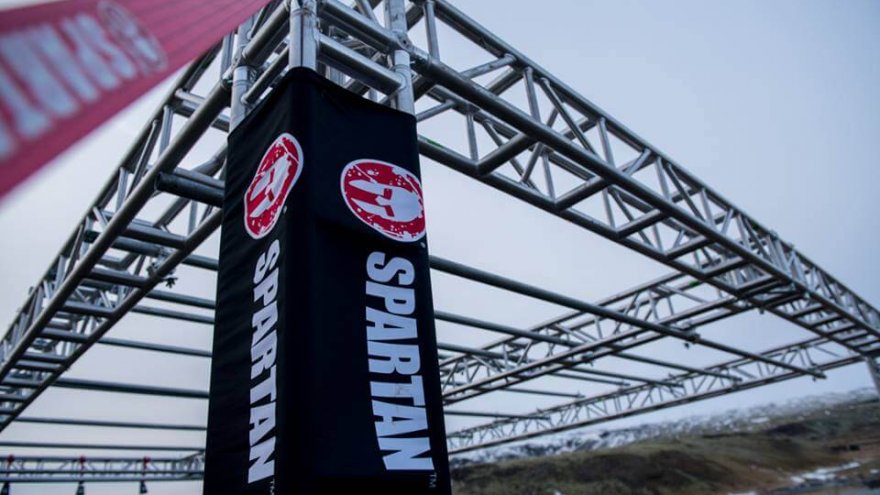
Hundreds of athletes gather towards the starting line like an army. They are all geared up for battle with focused minds and strong bodies. Cheers echo through these bands of brothers. AROO! This is Sparta. (Well, it’s a Spartan Race.)
And then they march forward, picking up the pace as the corral of participants moves ahead. Their feet quicken as they pass Start and take off full sprint. They are only stopped by obstacles (literally) along the way, but they defeat them like enemies until they are victorious.
Spartan Races are more than just an event. They also allow participants to become part of this expansive community of those who are passionate about their fitness and pushing themselves to complete new challenges.
Because of its ever growing popularity, chances are you have heard about Spartan Races. Maybe you know that they are obstacle races, but the world of Spartan racing can be hard to navigate for a first-timer. But don’t let this all scare you away from signing up—especially when it comes to preparing for the obstacles. Training for a Spartan Race can actually be—dare we say—fun.
Here’s what you need to know about Spartan Races.
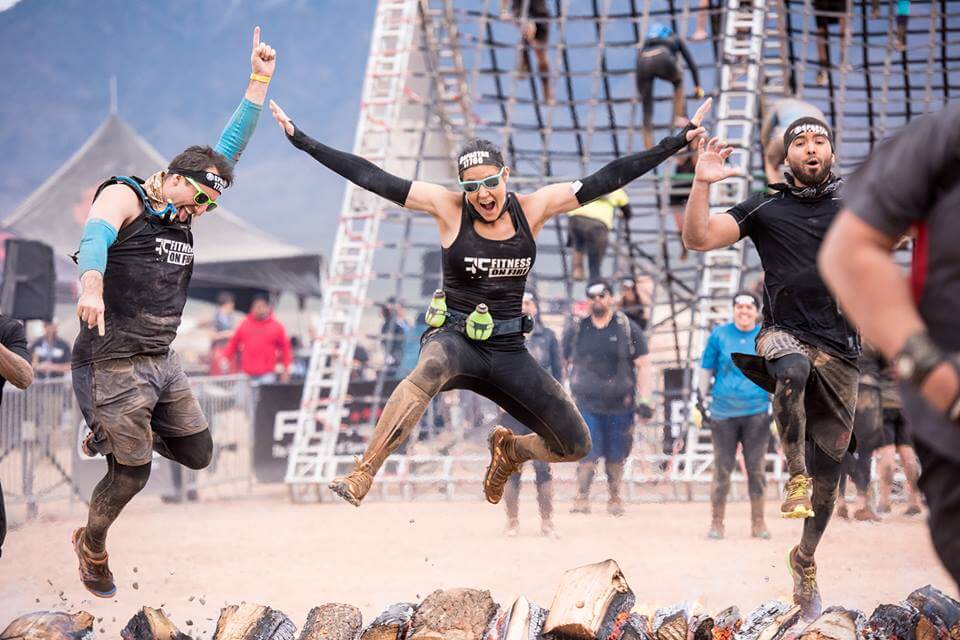
What Is A Spartan Race?
Founded by Joe De Sena, a Spartan Race is an obstacle course race that has participants climbing under barbed wire, scaling walls, crawling through mud and jumping over fire. These events vary when it comes to distance, ranging from a 3 mile obstacle race to marathon distances.
Spartan events are held across the U.S., and 30 other countries including Canada throughout the year (yes, even in the winter.)
All finishers receive a finisher medal. And on that medal is a separate wedge. Finish three Spartan Races in a year—specifically a Sprint, Super, and Beast,—and each piece of wedge creates a complete Trifecta medal, the coveted medal that is sought after by many warriors.
Spartan Sprint
Spartan Sprints are the most popular races among the franchise. This event has the short distance of 3 miles to 5 miles and has about 20 to 23 obstacles. These are ideal for beginners to get their feet wet and earn their first medal. It’s also great for triathletes, and those looking to challenge themselves.
Spartan Stadium Series
This event is similar to the Sprint, in at it has the same amount of distance and obstacles. These races are held at sports stadiums. This means there are no water, mud or barbwire obstacles. This doesn’t mean that it is easier. In fact, from this finisher of the 2014 Citi Field Sprint in Queens, New York, participants can expect a lot of stair climbing. This event is perfect for CrossFit lovers.
Spartan Super
This is the next level of races. The Super consists of 8 to 10 miles, with 24 to 29 obstacles. This event is geared more for experienced athletes or those who competed Sprints or Stadium events and want a bigger challenge.

Spartan Beast
Its name says it all. This an even more challenging event, consisting of 12 to 14 miles with 30 to 35 obstacles. This event is designed to test the participants’ strength and endurance, so it’s ideal for those who want to push their limits.
Spartan Endurance Races
If these weren’t challenging enough, Spartan Races also have a series of Endurance Events. This includes the Ultra Beast, which is a marathon (or even longer distance) with obstacles. There is an Agoge, a 60-hour event that is team-based and tests physical, mental and tactical skills.
The HH12HR is a 12-hour event, and the Hurricane Heat is a 3 to 4-hour event, with both geared for teams.
How To Train For A Spartan Race
So how exactly does one train for a Spartan Race?
“Drink beer and do burpees. Try to run,” Brian Jones, a member of Spartan Race’s Facebook group said.
While Spartans have a good sense of humor, there must be proper training for these events before drinking that victory beer.
Spartan’s website offers training plans and exercise videos, as well as tips to defeat obstacles such as working on grip strength which is crucial to success.
Popular obstacles include crawling through mud under barbed wire, scaling the Inverted Wall, carrying logs, swinging across Monkey Bars, the Rope Climb, carrying Sand Bags, and dragging tires—just to name a few.

If the participant fails at completing the obstacle, they must complete 30 burps as a penalty. So get ready to love to hate these.
Get To The Gym
Signing up for an obstacle race wasn’t anything new for Tough Mudder finisher Miriam Mason. But as a first time Spartan Sprint finisher from Brooklyn, New York, she trained for three months in preparation for the event. On a good week, this meant 4 days in the gym (that provided babysitting for her toddler). This included group classes with an emphasis on the upper body, using the stairmaster, and walking on the treadmill at an incline.
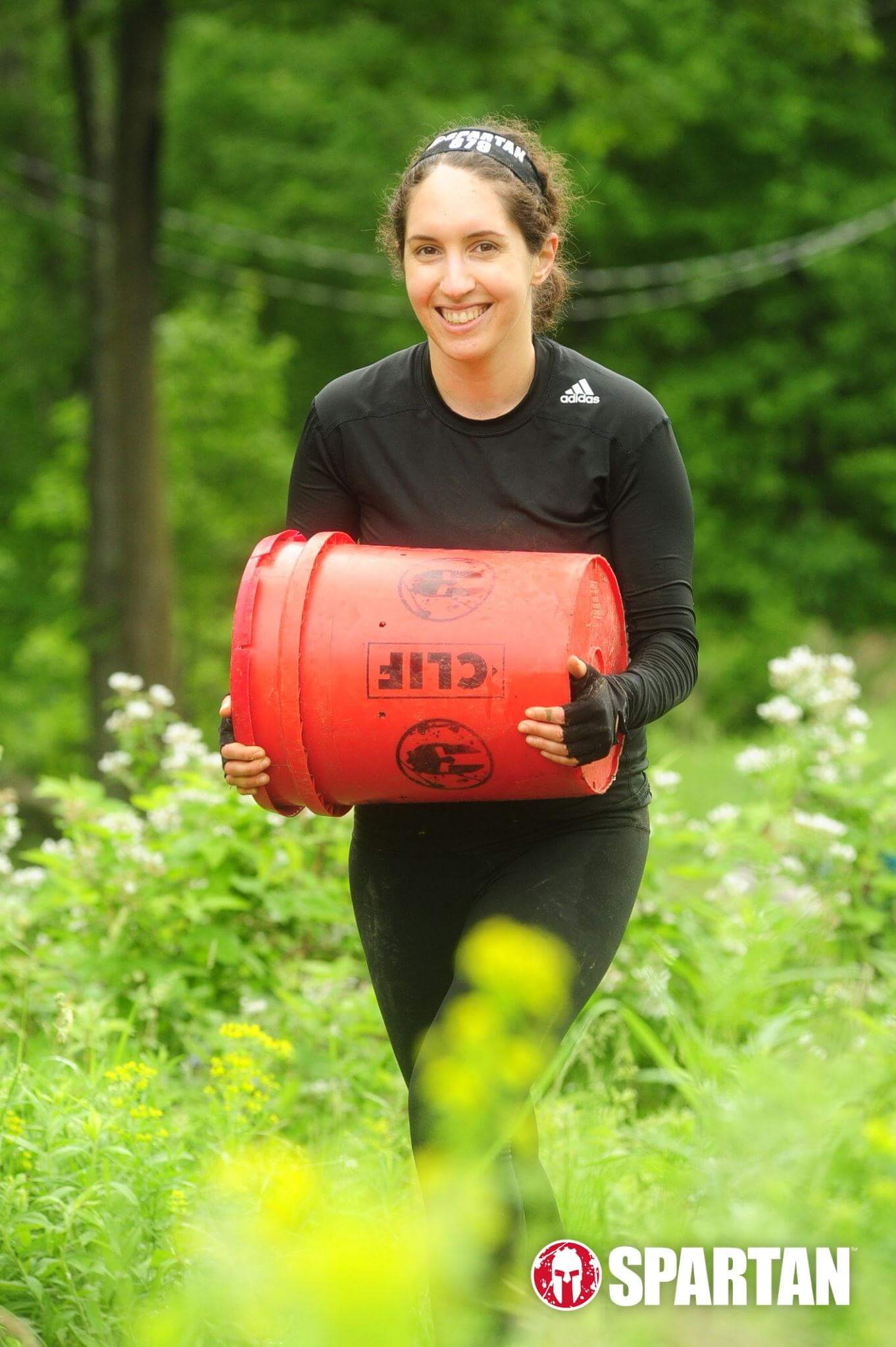
Also get ready to love to hate steep climbs and hills.
“Do lots of stair climbing and walking uphill to train your legs,” Mason told Runner Click. “I was advised to do the stairmaster and treadmill at an incline because of the intense incline at the Spartan race.”
For Josh McKinney, training for a Spartan race is “pretty simple.” Just lift 6 days a week and run 3 to 4.
For the Spartan Endurance events, expect to do workouts like walking or running on the treadmill while wearing a weighted backpack or vest or both, while also carrying weighted plates to work on grip strength.
No Gym, No Problem
“Train like you were a kid,” Spartan finisher Angie Kemp said.
This means having fun while getting physical. Practice on monkey bars. Exercises like pull-ups are key. Many simply say carry heavy things (try filling a bucket with sand or gravel) long periods of time in awkward places or uneven terrain and during unusual conditions.
And then do lots of burpees.
“Its not a matter of if,” Spartan finisher Tim Hare said. “It’s how many times you will need to do them.”
Focus on full body exercises. Some use CrossFit as a way to train. Also, mix in some cardio for endurance. Just remember to get those runs in as well, especially for the desired distance. And run on all terrains—and with lots of hill work.
“The uphill-ness of the Spartan events is understated,” Hare said. “[Do] lots and lots of hill running and stair climbing.”
While weight lifting, cardio, and gym classes are great ways to train for the event, a gym membership isn’t needed.
“We train together in our makeshift gym in our basement when our daughter is sleeping at night and it’s a lot of fun,” Mason said. “We are trying to incorporate being active into the culture of our family so we can set a good example for our daughter.”
Train The Mind And Never Give Up
These races call for a strong mental state too, so many Endurance athletes recommend training the mind as well. This means learning not to over think things, trust in oneself and have a don’t stop, won’t stop mentality.
For Bill Pascual Jr., a construction manager from Mahopac, NY, workouts include weight training, HIIT training and cardio. And if working up a sweat isn’t enough, Spartans wear a weighted vest during cardio. In Pascula Jr.’s case this is an additional 40 lbs.
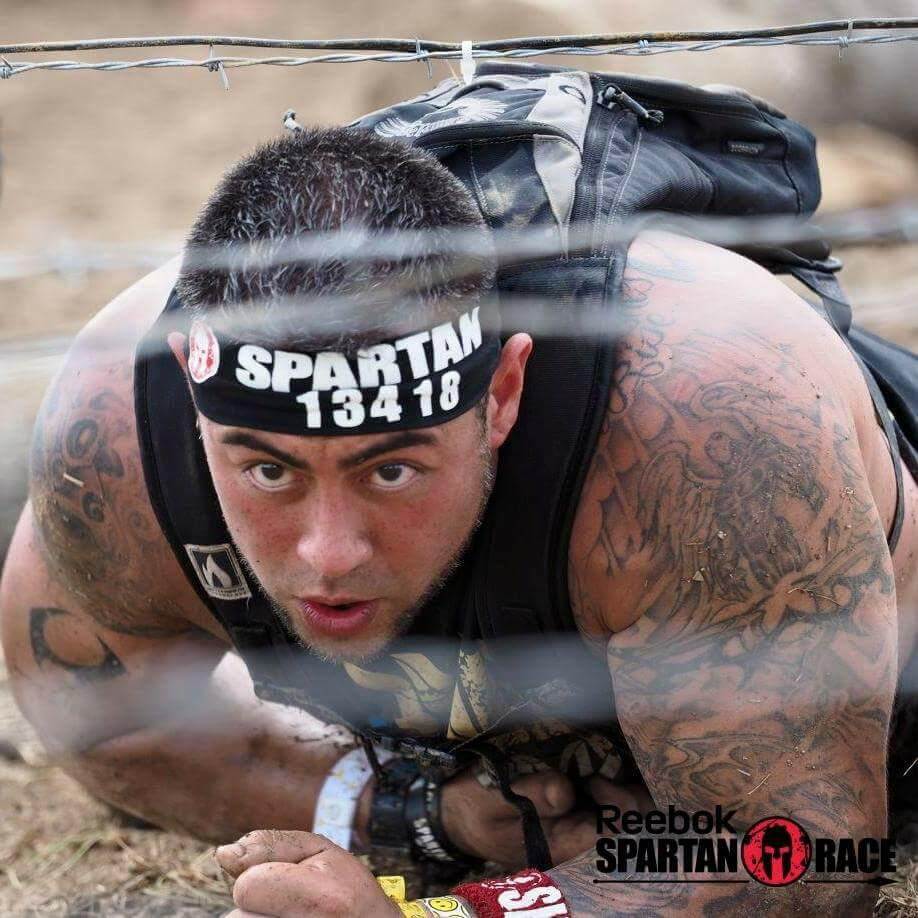
Completing his first Spartan Race back in 2013 at the Tuxedo Sprint, the 40-year-old has completed 23 Spartan races thus far. This includes the 2014 Carolinas Beast, 2015 Ohio Beast, 2015 Boston Super, 2015 Vermont Beast, 2015 Fenway Sprint (twice), 2016 SoCal Super and Sprint, 2016 Citi Field Sprint, 2016 Hawaii Super and Sprint, and 2017 West Point—just to name a few.
And while this an impressive lineup with many back-to-back races, this Spartan lost his warrior spirit after breaking his ankle training for a Spartan Race in 2016.
“I had a difficult recovery and fell into self pity,” Pascual Jr. said. “I went through many doctors, physical therapists and massage therapists which seemed to no end.”
But something you will learn about the kinds of people who do Spartan races is that they can overcome any hurdle thrown at them. These are among the most inspirational people who are focused on their goals and even when challenges side line them, always get back up.
Now finally pain-free Pascual Jr. is back to grinding hard. This includes training 5 days a week. He rises at 3:30 in the morning to get a good workout in before commuting to work in New York City. It also means no weekends off.
Find A Team
It also is great to train and compete as a team. This helps in both overcoming obstacles that require a helping hand, as well as staying motivated to finish.
For Mason, training for Spartan Races is a family event. Mason started training for her first Sprint to be able to join her husband at the races.
“During the race, my husband Joe, who is an exercise physiologist and trains people to run OCRs always stayed by my side and helped me finish any obstacle even if it involved getting my muddy foot in his face while getting across the monkey bars,” the Whole30 coach from Brooklyn revealed. “I think doing these races together trumps any typical outing or date together and it strengthens not only our muscles and mental grit but our marriage as well.”
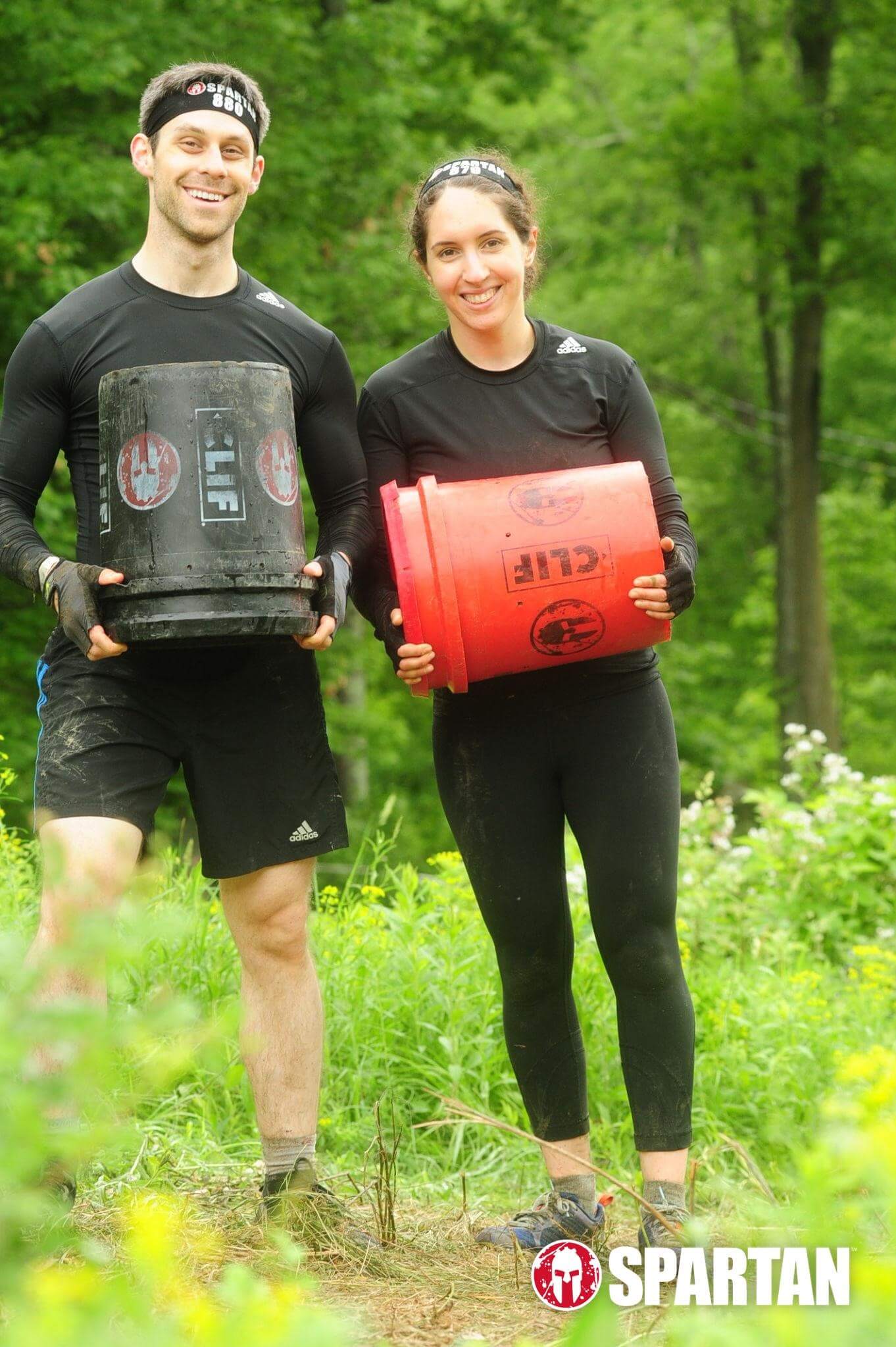
Plus, doing obstacle races, in general, are just so much more fun when joined by friends and/or family members who are competing as well.
Fuel Right
Spartan Races are grueling events that require the commitment to training. And that also means fueling properly and eating right to be able to be in the best shape and health for race day.
That might also mean adjusting one’s diet to fit their bodies needs.
“As a certified Whole30 coach I believe that eating whole nutritious foods like fruits and vegetables and good sources of protein are imperative for having the energy to train,” Mason said. “But since the nature of the training is high intensity, it was important to modify by adding more carbs to my diet. On the days that I was training, I made sure to add some organic white rice to my meals as well as potatoes, and gluten-free bread.”
Ready For Race Day
It takes guts to sign up for a Spartan Race. It takes a whole lot of sweat and dedication that leads up to race day. And on that day, it takes a whole lot of physical effort and heart. But with the right training that medal is only a few obstacles away.
“Forget everyone else and just train raw and intense,” Pascual Jr advises first-timers.
Train hard and don’t underestimate the course,” Mason said. “And have fun!”
Sources
- , https://life.spartan.com/post/spartan-race-frequently-asked-questions, Company website
- , The 12 Hour Hurricane Heat (HH12HR), and how to beat it, Blog Website
Latest Articles
 Is Running on a Treadmill Easier Than Running Outside?Runners have their own preferences, whether it is treadmill running, running outside on the road, or exploring trails. So...
Is Running on a Treadmill Easier Than Running Outside?Runners have their own preferences, whether it is treadmill running, running outside on the road, or exploring trails. So... Is It OK to Use Trail Running Shoes on the Road?While trail running shoes can be used on roads, especially in situations where a runner encounters mixed terrains or pref...
Is It OK to Use Trail Running Shoes on the Road?While trail running shoes can be used on roads, especially in situations where a runner encounters mixed terrains or pref... How to Fix Sore Quads After Running?Rest, ice, gentle stretching, and over-the-counter pain relievers can help soothe sore quads after running. Also, ensure ...
How to Fix Sore Quads After Running?Rest, ice, gentle stretching, and over-the-counter pain relievers can help soothe sore quads after running. Also, ensure ... 10 Fruits With The Most Electrolytes to Replace Sports DrinksThese fruits are high in electrolytes such as potassium, magnesium, and calcium, essential for hydration, muscle function...
10 Fruits With The Most Electrolytes to Replace Sports DrinksThese fruits are high in electrolytes such as potassium, magnesium, and calcium, essential for hydration, muscle function...

